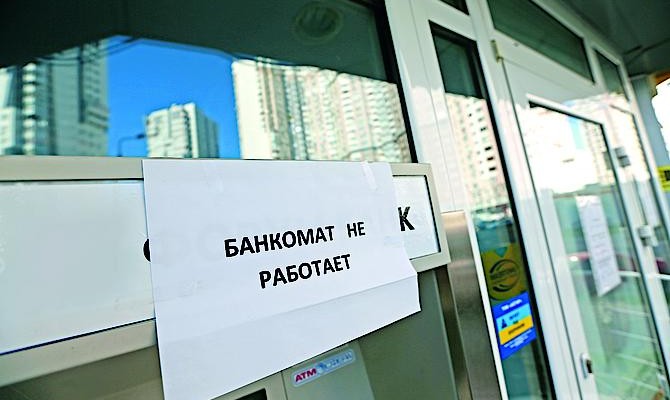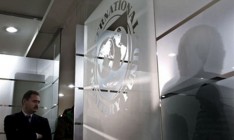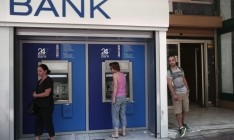Economy
State supportNot everybody will be lucky. The IMF allowed to help only several Ukrainian banks

The International Monetary Fund has envisaged a possibility for the government to finance recapitalization of banks in the amount of UAH 46 bn in 2014-2015, but limited the list of the financial institutions eligible for obtaining government support. The list includes only nine banks, eight of which are from the first group by the size of assets and one – from the second group.
Double problems
Based on the results of the first review of Ukraine’s performance under an economic program supported by a Stand-By Arrangement (SBA), the IMF allowed the Ukrainian government to increase the funds for recapitalization of the banks from UAH 15 bn to UAH 23.5 bn this year and also allocate UAH 22.5 bn next year for these purposes, which earlier was not envisaged in the program. The total allocations for salvation of the financial institutions will thus increase from 1% to 2.8% of the GDP. In particular, the Deposit Guarantee Fund will be allocated 0.8% of the GDP.
The IMF experts were forced to reconsider the estimate of the lifeline by deteriorating quality of the bank assets. In the end of 2013, according to NBU assessments, the share of bad loans amounted to 12.9%, while in May-June 2014 it increased to 14.6-14.7%. According to the IMF estimates, in favorable conditions (if the conflict in the East of the country begins to subside in the coming months and the economic recession of 6.5% in 2014 will be replaced by 1% growth in 2015), this indicator will increase to 21.5% by the end of 2016.
In case the conflict continues with the same intensity in 2015 and leads to economy’s shrinking by 7.3% this year and 4.2% decline next year, the share of bad loans will double to 27.1% by the end of 2016. If the banks continue forming 60% reserves under bad loans at that, the demand for fresh injections of funds for ensuring 7% capital adequacy Tier I will amount to 3.5-5% of the GDP in the first case and 4.5% of the GDP in the second.
“Judging from the experience of 2008-2009 crisis, it is expected that private investors will cover around half of the required additional capital. In particular, foreign banks will be fully supported by their mother companies,” write IMF experts in their first review. The remaining amount – around 2.8% of the GDP – will be placed on the shoulders of taxpayers.
Selection of the candidates
Formally, the list of the candidates for the state’s assistance has not been drawn yet. The bank diagnostics of the quality of assets and sufficiency of regulatory capital began in the 15 largest banks of the country on May 26 and in the twenty following banks on July 15.
Under the agreement with the IMF, the National Bank of Ukraine was to analyze the results of the first wave of diagnostics of the financial institutions by the end of August and sent to the banks letters as to the assessment of the volume of required recapitalization and provision of the plans for restructuring.
In addition, by the end of summer the NBU was to draft with support of the IMF and the World Bank a standard plan of restructuring the list of criteria for assessment of reliability of the plans. After the first wave of tests, the banks must submit their corresponding plans to the NBU by the end of September and implement them by the end of 2014. For the banks of the second wave these deadlines have been shifted to the end of November and end of February respectively.
Nonetheless, it is possible to understand even now, which of the banks will be able to count of recapitalization straight from the budget. According to the IMF review, only the banks with assets or deposits amounting more than 2% of the total in the banking system will be able to expect government’s assistance. The same criterion is envisaged in the conditions of the US $500 mn loan of the WB for the reform of the financial sector, which was approved in August.
According to the NBU data as of July 1 and calculations of Capital 17 financial institutions – all banks from the first group and two from the second – meet this criterion. However, eight of them are foreign banks, which will not be able to get the funds since it is assumed that the mother structures will be the ones saving them. Therefore only nine Ukrainians banks, which account for 49% assets and 50% of deposits in the banking system, will be able to expect being saved by the government. In particular, they are state-owned Oschadny, UkrEximBank and Ukrgazbank, PrivatBank owned by Ihor Kolomoyskiy and Hennadiy Boholyubov, Delta Bank owned by Mykola Lahun, Nadra Bank owned by Dmytro Firtash, Rinat Akhmetov’s PUMB, Oleh Bakhmatyuk’s VAB Bank and Kostyantyn Zhevago’s Finance and Credit Bank. All smaller banks of the remaining top hundred without foreign capital in case of insolvency will be subjected to procedures of the DGF.
Life after death
Upon recapitalization the state will become the controlling shareholder in a salvaged bank, where the share of current shareholders will be preliminary diluted. At that, the deposits of the shareholders, board members and top managers will not be reimbursed. A special department under the Ministry of Finance, which will be set up before the end of September, will control the management of the new state-owned banking assets. As for the remaining banks, their fate will be decided in the DGF.






 of the agreement of syndication with Financial Times Limited are strictly prohibited. Use of materials which refers to France-Presse, Reuters, Interfax-Ukraine, Ukrainian News, UNIAN agencies is strictly prohibited. Materials marked
of the agreement of syndication with Financial Times Limited are strictly prohibited. Use of materials which refers to France-Presse, Reuters, Interfax-Ukraine, Ukrainian News, UNIAN agencies is strictly prohibited. Materials marked  are published as advertisements.
are published as advertisements.